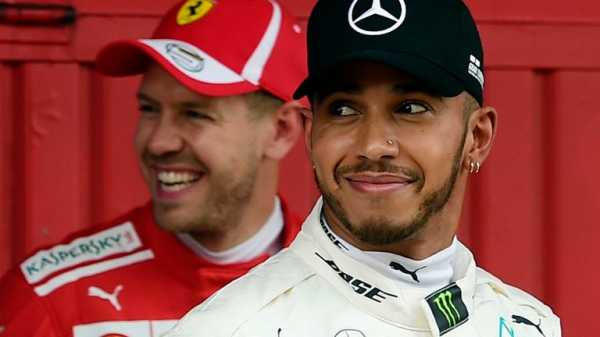
As F1 embarks on its first-ever triple header, it’s the destination of this year’s world championship which will be occupying the thoughts of Mercedes, Ferrari and Red Bull this weekend in France.
With a third of the season elapsed, just a single point splits Sebastian Vettel and Lewis Hamilton in the Drivers’ Championship. In the Constructors’, just 17 points separate leaders Mercedes from Ferrari – the equivalent of a single second-placed finish with 14 races to go.
Against all expectations, it’s Ferrari who arrive in France with momentum. Mercedes, the pre-race favourites for Canada, suffered a series of aggravating problems in Montreal, culminating in an emphatic defeat and a warning from team boss Toto Wolff “to wake up”.
But it’s not just Montreal which will be worrying Mercedes. But for bad luck, bad strategy and a bad mistake in Baku, Vettel’s lead would be significant rather than slender. The Ferrari driver has led 207 laps in 2018; between them, Hamilton and the rest have only topped 227.
Despite Wolff’s warning, Mercedes haven’t fallen asleep on the job in 2018. But they have on occasion been caught napping – and, more importantly, caught by Ferrari and, on selected circuits, Red Bull.
For the first time in a long, long time, Mercedes arrive at the Paul Ricard circuit under a degree of pressure to reassert their authority over the field.
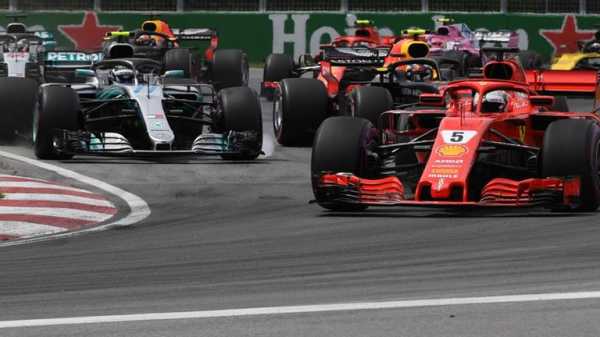
Is the Ferrari simply the better car?
While the race itself was instantly forgettable, Canada’s significance shouldn’t be overlooked.
Vettel’s pole position was his fourth in seven races while his win was his third of 2018. That’s telling in itself. But the small print highlights something else too: as only Red Bull and Daniel Ricciardo beat Ferrari’s number one on Saturday in Monaco, Australia and Spain remain the only two sessions this year when either Hamilton or Mercedes team-mate Valtteri Bottas have beaten Vettel in qualifying.
Although it hasn’t always shown up in the results, the Ferrari has to be regarded as the fastest car this year.
And then there’s what Canada meant to Ferrari in isolation to consider.
Before Vettel’s serene cruise to victory, Ferrari’s season had appeared in danger of ebbing away. Their last victory had been in the first week of April and their performances in Monaco and Spain had offered scant encouragement.
‘A couple of races ago l was concerned about Ferrari, they appeared to be slipping back from Mercedes and apparently had the FIA on their case for all manner of things,’ wrote Martin Brundle in his post-Canada column for Sky F1. But there were no such concerns after Canada, just awe and admiration for a Ferrari car seemingly without equal this term.
“Ferrari ultimately have had a slightly better package,” reflected Hamilton. “All round they’ve been doing a slightly better job so we’ve got to do more.”
Non-executive chairman Niki Lauda was even more effusive. “The Ferrari as a package is unbelievable,” he said. “The car is fantastic.”
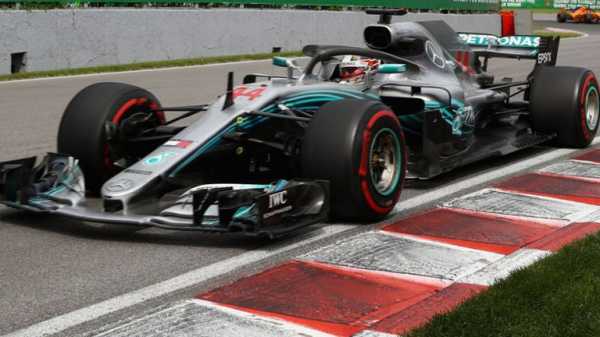
Why did Mercedes struggle so much in Montreal?
With hindsight, Mercedes were beaten in Canada even before they arrived. Their scheduled engine upgrade had to be abandoned after a fault was detected on the team’s dyno. That meant Hamilton and Bottas – as well as Mercedes customers Williams and Force India – had to run engines at the end of their shelf life and down on ultimate performance on a weekend when their Ferrari rivals were benefiting from an upgrade probably worth a tenth or two.
Hamilton’s engine then overheated at the start of the race and had to be turned down so he could make it to the finish. As Bottas put it afterwards: “We need the engine upgrade. Today showed we are not quick enough.”
It does, though, remain to be seen whether the upgraded new engine will be run in France.
Will Mercedes have to delay their new engine again?
Mercedes’ other problem was a lack of hypersoft tyres after they elected to only take five sets – fewer than any other team – of Pirelli’s fastest compound to Montreal. The scarcity meant Hamilton and Bottas didn’t run the new-for-2018 tyres at all during Friday practice and, as a result, didn’t maximise their hypersoft runs in Q3. When the anticipated overtaking feast failed to materialise on race day, and early track position became as critical to the result as it had in Monaco, Mercedes’ tyre selection, made 12 weeks previously, had become result-defining.
But it’s a problem which won’t reoccur this weekend: the hypersofts won’t return until Singapore. Further, the ‘thinner’ tyres which Ferrari disliked and Mercedes thrived upon in Barcelona last month, will be used again in France.
Advantage Mercedes?
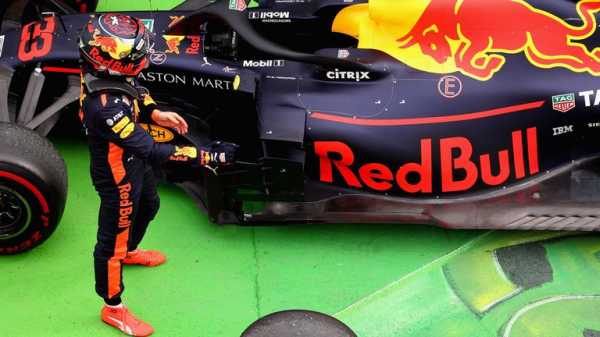
Where do Red Bull fit into the picture?
The problem for Red Bull is that the prevailing characteristic of the three upcoming circuits is power sensitivity.
Despite Renault’s engine upgrade, the Red Bull still lacks the outright grunt of Mercedes and Ferrari. But the gap is narrowing. Excluding Monaco, Red Bull’s qualifying deficit to pole position for 2018’s opening rounds was 0.582 seconds. In Canada, and on a circuit where power is critical, the gap was reduced to 0.173 by Max Verstappen.
“I never believed they would have come here and been as quick as they were,” reflected Sky F1’s Paul Di Resta. The caveat was the warning of Red Bull boss Christian Horner their car was losing up to three tenths to the Ferrari along the straights. But the feeling persists that Red Bull are closing the gap to the point where they are genuine – if outside – contenders.
“It’s a big fight this year,” said Ferrari chief Maurizio Arrivabene. “Red Bull are very strong, Mercedes very strong. It will be an interesting championship.”
And unpredictable. The last three events have produced three different dominant victors from three different teams. In Canada, the top three teams were almost too closely matched, their proximity in performance offering little scope for the lap-time divergence required for successful overtaking.
But the glass-half-full perspective is that F1 2018 is more unpredictable than the sport has been in an age: the three-way split of victories between Vettel, Hamilton and Ricciardo of victories in the opening six rounds was a first in 30 years.
“It seems that at every race we arrive there’s no clear way of identifying the likely winner,” noted Brundle. “Even if Red Bull remain the outsiders, I still think that all six drivers are in with a shout of winning the championship this year and it’s whoever gets their car dialled in and makes the fewest mistakes who will win it.”
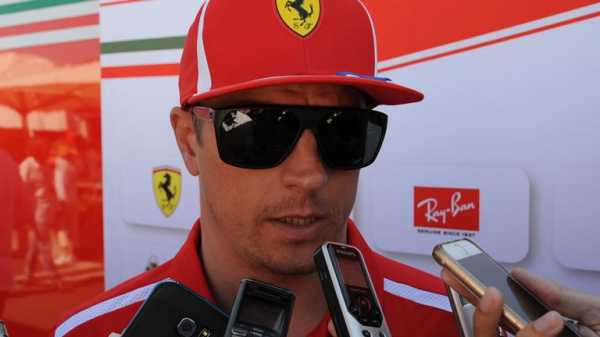
Serious times for the silly season?
Bubbling in the background this weekend will be the reaction and repercussions to Red Bull’s decision to dump Renault to switch to Honda power in 2019 – a complete reverse of the direction McLaren took nine months ago.
With their long-awaited engine decision finally made, Red Bull’s attention will now turn to persuading Daniel Ricciardo – one of four drivers out of the top six out of contract in 2019 – to re-commit his services.
Regardless of Red Bull’s engine decision and the size of their offer, it would be a surprise if the Australian re-signs before the long-running Hamilton-Mercedes contract saga is resolved. When might that be? Silverstone is as good a bet as any other. So too that Valtteri Bottas, fast becoming a template for the perfect number two driver, will be retained just as soon as Hamilton, the yin to Bottas’ yang, is locked down.
Which just leaves Ferrari and their perennial dilemma over whether to retain Raikkonen to mull over. Will their patience snap? Much, again, may depend on what happens next when the F1 calendar goes into overdrive over the next three weeks. Raikkonen has shown glimpses of his best this term but not consistently and not for lap after lap on race day. If that trend is repeated across France, Austria and Britain, and Ferrari fall away from the Constructors’ Championship, the decision may be forced upon the Scuderia.
The unexpectedly-swift emergence of Charles Leclerc, the Ferrari protege excelling at Sauber is a new factor to the equation, but Raikkonen has been written off before and on every occasion Raikkonen’s obituaries were premature.
In a season which can’t decide which way it’s going, 2018 has reached its crossroads. After the triple header there is unlikely to be any more going back.
Sky Sports F1 is the only place to watch every Formula 1 Grand Prix, qualifying and practice session live in 2018. Get Sky Sports F1.
Also See:
Sourse: skysports.com






